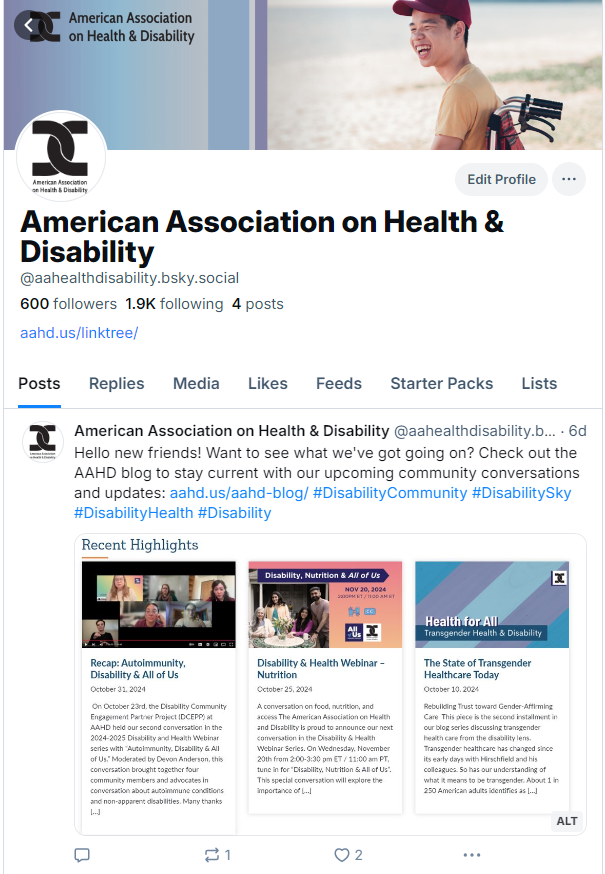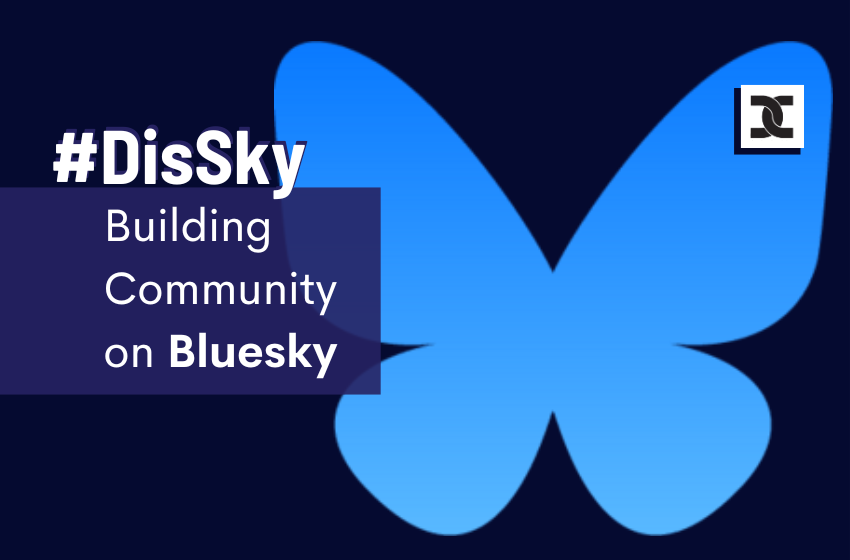Access and Inclusion in the Twitterverse
We’re leaving Twitter. Since 2022, accessibility on the platform has been dismantled as part of a broader set of cuts, turning the platform away from recent gains. The Accessibility Experience Team was eliminated in November 2022. This happened just after the launch two months prior of expanded alt-text features on the site, championed as a needed feature for blind and low-vision users. Voice Tweets, color contrast tools, audio captions, and motion effect toggles on animations had also become available since 2020 as part of a broader suite of accessibility settings. With about 22% of the disability community using Twitter, these features were a major advancement for the user base. Twitter had also been recognized in 2022 as a top “Best Place to Work for Disability Inclusion” on the Disability Equality Index. That hard-won progress for disability inclusion has been stopped under new leadership.
Once the accessibility team was cut, maintenance of these features was no longer available. Organizations like the National Association of the Deaf (NAD) suspended posting on the platform at that time until Twitter resumed “a showing of commitment to full inclusion.” They have not resumed posting. Some of AAHD’s other partner organizations across the disability community have recently banned use of the site as well, deactivating their accounts. Disability advocates have mourned the loss of what #DisabilityTwitter had become for people over the years – a critical space for community knowledge sharing, especially for different chronic illness and disability sub-communities. This digital town square is no longer a place of community advocacy and engagement as it once was.
At the same time that disabled users have lost reliable accessibility features on the site, other key departments have also been lost. Twitter cut their Human Rights and Public Policy Teams, which played key roles in content curation and user verification for the site. Despite a claim that Twitter would remain committed to strong content moderation, the site has seen a rise in hateful content and disinformation these last two years. The Center for Countering Digital Hate has documented this trend. Antisemitism, anti-LGBTQ rhetoric, sexism, COVID-19 misinformation, pseudo science and racist rhetoric have all spiked on the site. A tolerance for hate speech has replaced the culture of community safety and free dialogue that Twitter was once known for.
At the same time, the Community Notes feature meant to catch misinformation on the site has been failing to activate for the most controversial posts. And once a useful resource for academic researchers studying social media data, that prior data transparency and functionality has now been reduced due to monetization. Many important studies have been conducted on disability community behavior and needs through the platform, including work on the COVID-19 experience among people with disabilities. At a time when advocates are pushing for better disability data collection, this is a tremendous loss to the public health researcher community.
Given these and other challenges with Twitter, the user base has declined substantially, with only 19% of the U.S. population actively using the site as of this year, down from 27% in 2023. Major changes to the site have sparked an exodus of users, including new terms of service that allow AI training on all user content. Considering these changes, AAHD has decided to transition our organization to more inclusive platforms that champion accessibility and equity. We will continue to leave our account here as an archive of those resources we’ve already shared.
Building Disability Community on Bluesky
We at AAHD are broadening some of our engagement to Bluesky. In the last month, the Bluesky user base has been ballooning, with millions of new users rocketing the platform to the top of Apple’s App Store, and Google Play charts. Bluesky provides a number of accessibility features that set it ahead of the other Twitter competitors. It offers users the ability to toggle on an accessibility reminder for all posts, so that no visual content can be posted without alt-text. It also allows users to display larger alt-text badges and disable autoplay on videos and GIFs. Settings are also available to enable a larger font size. And in contrast to Twitter’s recent loss of the block feature, Bluesky allows for a “nuclear block” that ends all engagement with unwanted users.
Compared to other sites, Bluesky has been touted as more trustworthy for news content, lacking the algorithmic feeds of other platforms. Users are able to curate their own timelines and have the option to auto-follow curated “starter pack” lists of accounts across a range of interest areas, including cross-disability spaces, public health, policy, and health research. We hope you’ll consider joining AAHD on Bluesky. We’re curated a list of recommended resources to help you navigate the site as a new user below. (For individual users across the disability community, we also recommend checking out the Disabled.Social community on Mastodon.)
Resources for Moving to Bluesky
How to Use Bluesky
Migrate your follow list to Bluesky
Follow the Disability Community on Bluesky: #DisCo #DisSky #CripSky
Starter Packs
- Disability-Related Starter Packs

- Public Health Starter Packs
- Researchers
- Mental Health and Physical Activity Research
- Mental Health Research
- CL/Geriatric Psychiatry, Health Psychology
- Disabled in STEM
- Crip and Disability Scholars
- Critical Disability Studies & Disability Justice
- Public involvement and co-production
- Health services research
- Health services research 2
- Science Communication Researchers
